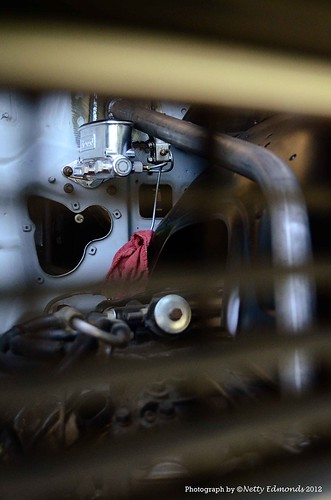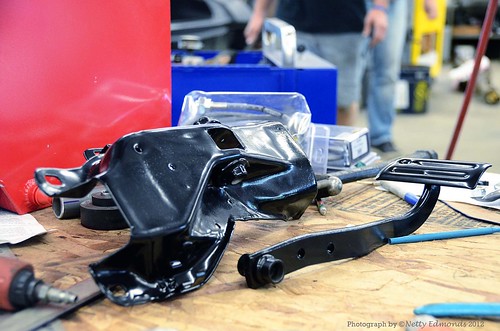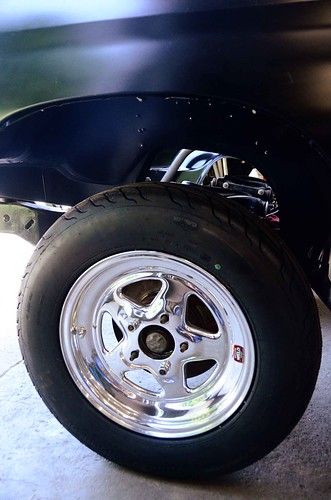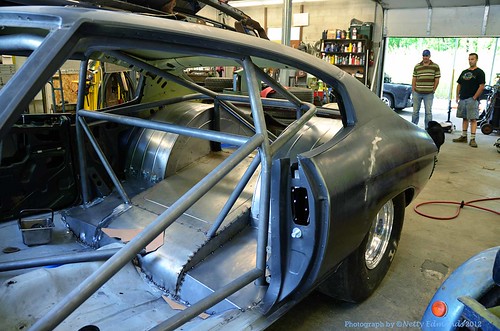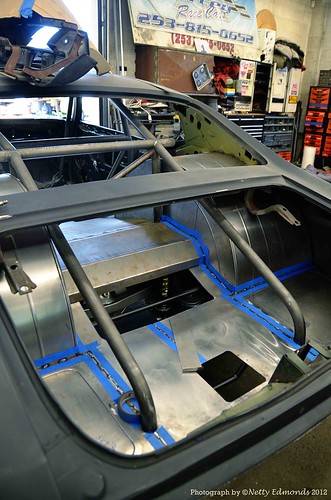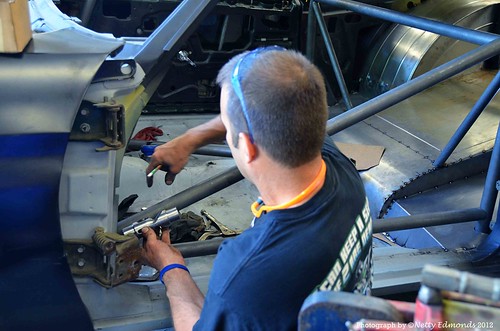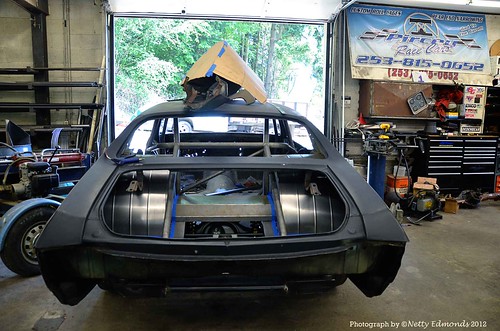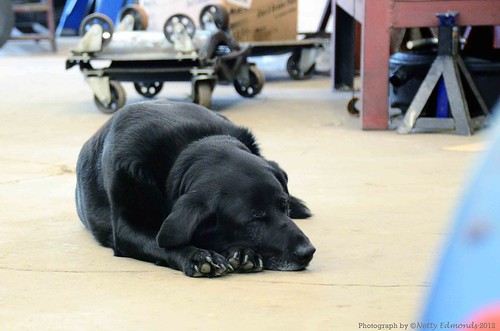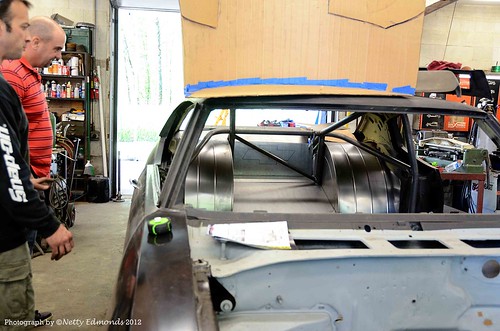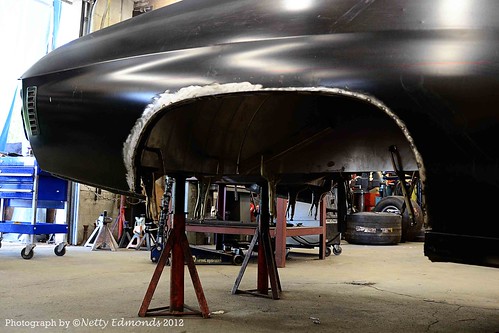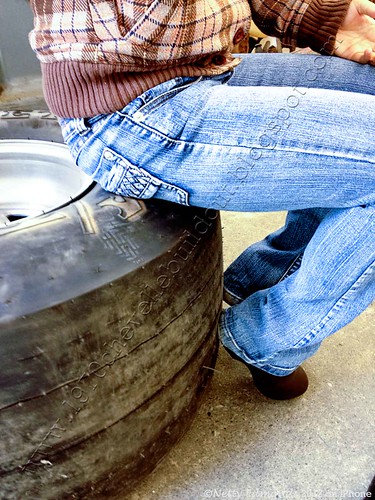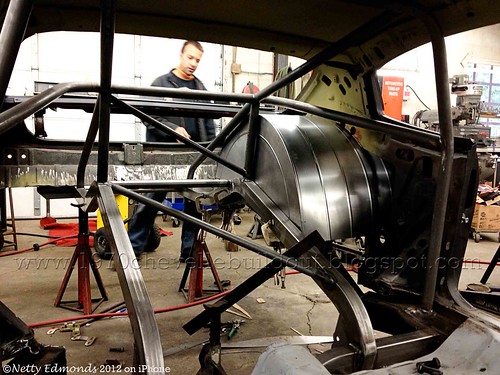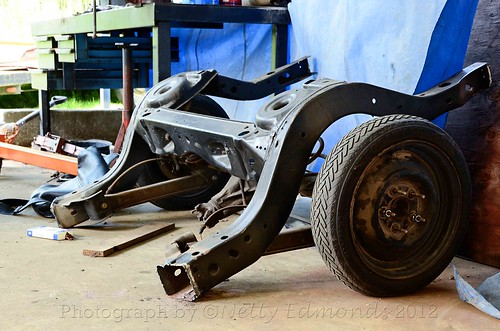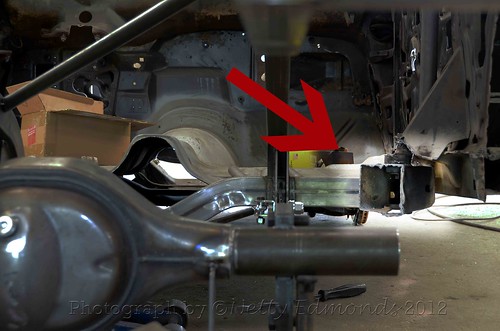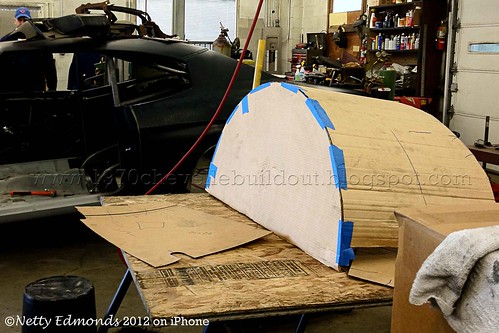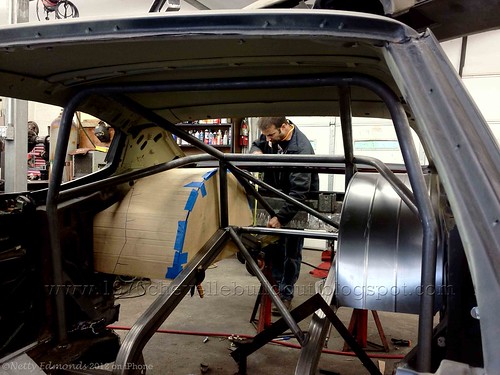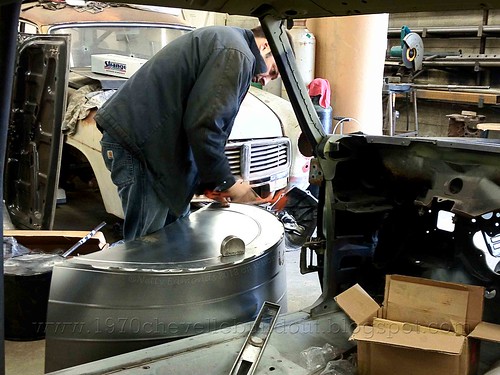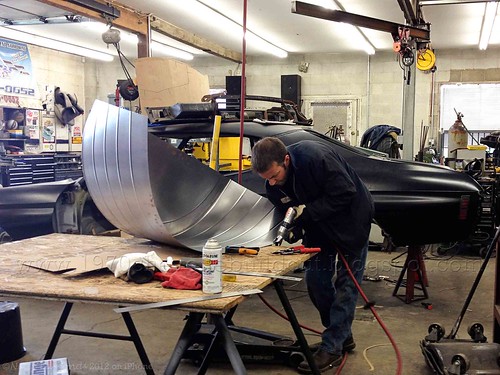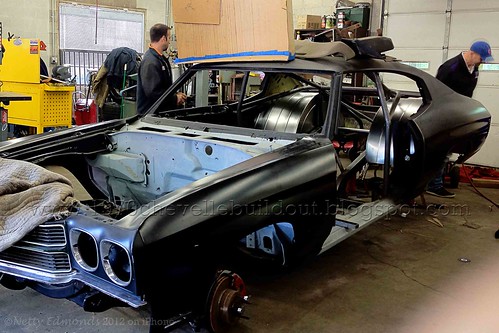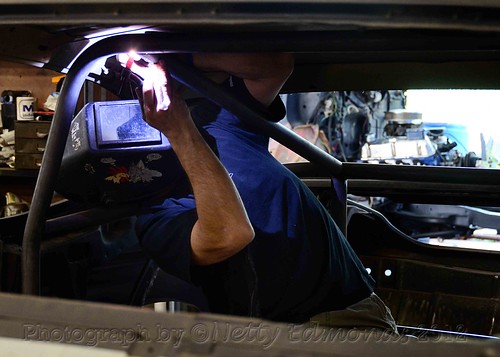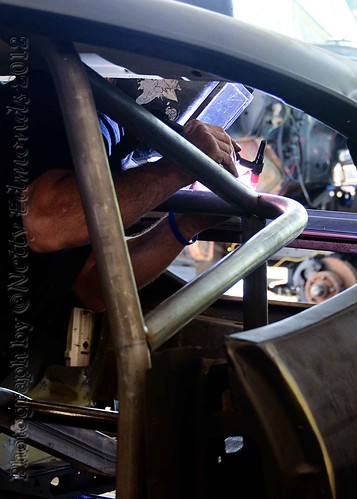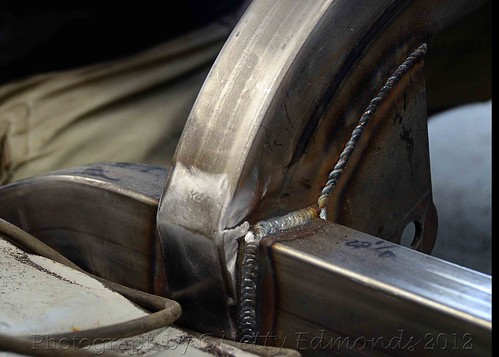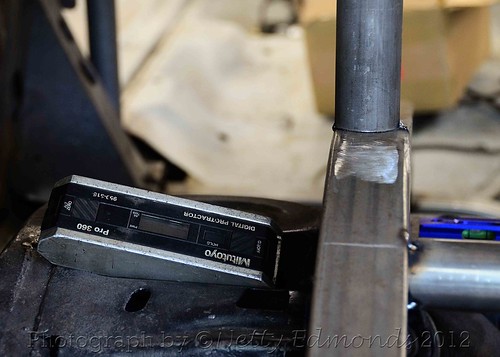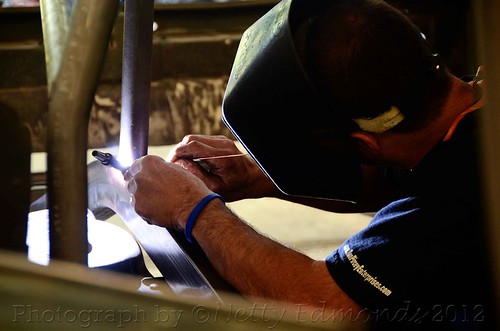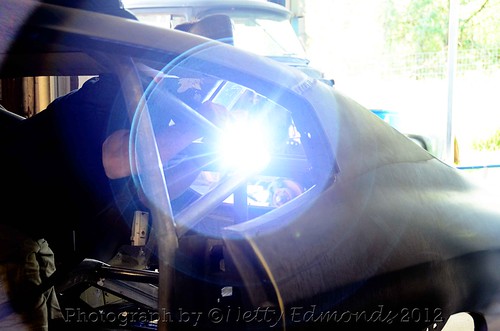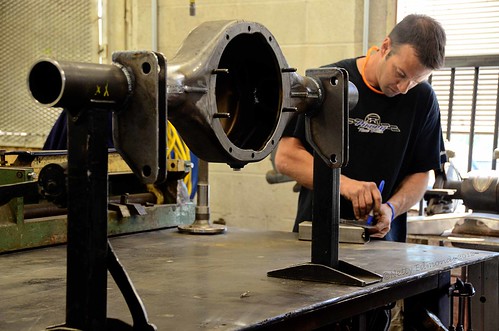And here she is. Hear her roar!
1970 Chevelle Build-out
The journey of a 1970 Chevelle, from the garage to the road. She was picked up as merely a metal skin that had been sheltered in a garage for more than seven years. One day, soon, she will shine and ride like the American muscle car that she was born to be!
Monday, August 17, 2015
She Roars to Life!
The Chevelle has been at Moslander's since Spring. The fellows who've been working on her were going to start her up two weeks ago, but the ride height was off. It took some research, and finally 5-Star got the call that "she's ready!"
And here she is. Hear her roar!
And here she is. Hear her roar!
Friday, June 15, 2012
A Break, I mean Brakes
See that shiny chrome tupperware looking thing at the top? That's the master cylinder.
The brake master cylinder to be exact. It provides the pressure that engages the brakes.
These parts were rusted when we brought them in. Ron spiffed them up.
Ron is still working to finish up some details.
If you think you see shocks...
You're right!
Polly, the guard dog, snoozes. It's gonna take more time to finish... she's taking a brake- I mean, break.
Friday, May 11, 2012
It's Beginning to Look a Lot Like a Car
Progress.
The trunk and wheel wells are in.
And so is the gas tank. Red for HOT!
Wheel opening stretched to accommodate the 18.5x33 inch tires.
It's beginning to look a lot like a car now.
Friday, May 4, 2012
Tubbin' It
They're called "tubs" to suggest how big wheel wells are; so big that you- well, at least I can take a bath in one of them. No car comes factory stocked with 18.5x33 inch tires. It's just impractical and too personalized. But downright manly, grrrrrr!
So when a hobbyist opts for behemoths for tires, the back half frame of the vehicle must be altered to accommodate them. Tubs.
This was the back half frame rail unit that came "as-is" with the Chevelle.
It was chopped off with clean precision. And of course Ron Pircey is going to cap and finish off the cut on the remaining frame nicely. A master always pays attention to the details.
Now that that's done, it's time to build the tubs. They are fabricated out of sheet metal that Ron bent and cut to fit into the void. He started with cardboard templates. Better to make a mistake on a piece of cardboard than on the sheet of metal. Also, templates make for a near, if not absolute perfect fit.
Let's have a test look, shall we?
Now that's tubbin' it!
.
Tuesday, May 1, 2012
In the Beginning
For those of you who are seeing the Chevelle for the first time at this stage, allow me to take two steps back, and show you how 5-Star Scotty came to have her. Click the links below:
A Cinderella In the Making
Arrival
The Wonderful Ron Pircey

A Cinderella In the Making
Arrival
The Wonderful Ron Pircey

Monday, April 30, 2012
The Transformation Begins
It was quite an introduction when the 1970 Chevelle arrived at Ron Pircey's. Ron is reportedly a wizard at chassis work. He comes highly recommended. He was quite was excited to see the body, and thrilled to get her framed with roll bars and the chassis, and standing on her own four wheels.
Progress has been steady. When we arrived for our next visit, this is what Ron was doing.
5-Star knows a lot about classic muscle cars. I don't. I especially don't know anything about the bones that support the car. Ron took the time to explain to me what he was doing. And with 5-Star, he made sure to consult about options and necessary fixes.
These are the lessons I learned today:
1. This is a digital protractor. He uses it to be sure that the roll bar and the frame rails will be parallel to the body when
the car finally stands on her own four wheels. This is imperative because the body is not on jig while he is building
her frame.
2. Ron's wizardry comes in the form of arc welding, specifically a process called TIG (tungsten inert gas) welding. The
welder doesn't use open flame, and therefore there were no sparks flying.
Progress has been steady. When we arrived for our next visit, this is what Ron was doing.
5-Star knows a lot about classic muscle cars. I don't. I especially don't know anything about the bones that support the car. Ron took the time to explain to me what he was doing. And with 5-Star, he made sure to consult about options and necessary fixes.
These are the lessons I learned today:
1. This is a digital protractor. He uses it to be sure that the roll bar and the frame rails will be parallel to the body when
the car finally stands on her own four wheels. This is imperative because the body is not on jig while he is building
her frame.
2. Ron's wizardry comes in the form of arc welding, specifically a process called TIG (tungsten inert gas) welding. The
welder doesn't use open flame, and therefore there were no sparks flying.
3. The fanciest polarized prescription sunglasses are not good enough to protect your... well, MY eyes from the flare of
the TIG welder. "Tonight you're going to hate life because your eyes will feel like they have hot sand in them," Ron
said.
4. This is the differential. It allows the driving wheels to rotate at different speeds, which is critical when the vehicle is
turning. It makes the wheel that is travelling around the outside of the turning curve roll farther and faster than the
wheel on the inside. "For our purposes, we call it the ford 9-inch," said 5-Star. And that is the extent of my knowledge
about the differential.
about the differential.
By the way, Ron wasn't kidding about the hot sand.
.
Subscribe to:
Posts (Atom)
